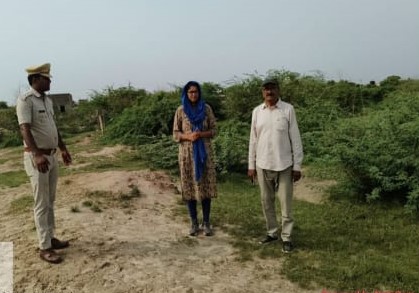- IFS officer restores Churu wastelands
- Nagar Vans and herbal parks created
- Grassland revival in Barmer launched
- Jaswantgarh sanctuary for blackbucks
Rajasthan’s desert districts like Churu and Barmer are infamous for degraded land, water scarcity, and lack of green cover. Years of neglect, encroachment, and uncontrolled dumping further worsened the ecology. Against this background, a young Indian Forest Service officer undertook a mission to revive the land. From creating urban green lungs to restoring grasslands, her work has now reshaped parts of Rajasthan’s dry expanse.
Converting Dumps into Urban Forests
2013 batch IFS officer Savita Dahiya, posted in Churu, identified forest patches that had been turned into garbage yards, truck parking spots, and encroached markets. According to media reports, she seized the opportunity during the COVID-19 lockdown to act. With limited staff, cases were filed, encroachments removed, and proposals fast-tracked to secure approvals within months.
This effort resulted in the creation of three Nagar Vans, two Luv Kush Vatikas, one medicinal park, and two “Green Lungs.” These spaces now feature tracks for walking, areas for yoga, children’s play zones, and small water bodies. Funding came through sources including MGNREGA, MLALAD, and government budget allocations.
Taranagar Herbal Park: A Collective Effort
One notable achievement is the Taranagar Herbal Park. Built with 93% MGNREGA support, it received help from a retired forester and the local MLA. Reported by media sources, community contributions also played a key role, with locals donating benches and infrastructure. The park houses 27 varieties of medicinal plants and draws more than 5,000 weekly visitors. It was later nominated for the CM Excellence Award.
Revival of Grasslands in Barmer
After being transferred to Barmer, Dahiya focused on grassland restoration. Over 1,100 hectares of wasteland dominated by invasive Prosopis juliflora were reclaimed. The most significant project was the creation of the Jaswantgarh Grassland as a satellite sanctuary. This was established to relocate blackbucks and chinkaras from Tal Chhapar Sanctuary, which faced overcrowding.
Jaswantgarh Grassland: A Satellite Sanctuary
The sanctuary was developed following a High Court directive. Revenue land was handed to the Forest Department to address the issue of overpopulation at Tal Chhapar. Within two years, the saline and weed-infested site was transformed. Native grasses such as mothiya, dhaman, and daab were introduced. Water bunds, fencing, and seed dispersal were also carried out. The project is now being documented as a replicable model for desert grassland rejuvenation in India.
From garbage dumps in Churu to barren wastelands in Barmer, Rajasthan has witnessed major ecological restoration. The projects have created new green zones, revived ecosystems, and supported both people and wildlife.
These efforts highlight how local collaboration and scientific practices can restore degraded ecosystems. The projects may inspire similar models for desert regions, strengthening conservation, boosting tourism, and improving community access to green spaces across India.
Disclaimer
“This news story has been developed by Ingenious India based on information available in the open domain for public consumption. Ingenious India does not claim ownership of original reporting and has compiled this article using publicly accessible media sources. For any concerns regarding the information, please contact the editor at ingindia22@gmail.com.”








